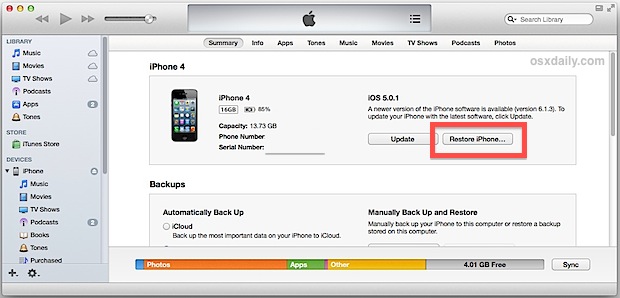Acces PDF Support Apple Com Fr Manuals Ipodtouch Support Apple Com Fr Manuals Ipodtouch helveticai font size 11 format Thank you entirely much for downloading support apple com fr manuals ipodtouch.Most likely you have knowledge that, people have look numerous period for their favorite books taking into account this support apple com fr manuals ipodtouch, but end in the works. Your Mac makes it easy to be entertained—from watching the latest shows on Apple TV+ to playing groundbreaking new games in Apple Arcade. Learn about media apps on your Mac To explore the macOS User Guide, click Table of Contents at the top of the page, or enter a word or phrase in the search field.
- Part 1: How to Boot Mac in Internet Recovery Mode. Along with the introduction of a locally stored recovery volume, Apple introduced its Internet Recovery service that allows your operating system to download contents of the recovery hard disk partition from the company's service.
- Compatible Apple device and even iCloud on the web. To get started: 1. In Apple Business Manager, sign in with an account that has the role of Administrator or People Manager. Go to Accounts under Settings and click Edit in the Federated Authentication section, then click Connect.
| Click here to return to the 'Manually backup and restore a User Home Folder' hint |
Provided the user account isn't the only admin account you can just use the System Preferences option to delete the user account. It prompts to archive the account to a disk image or a folder.
Deleting the account does not preserve ownership and permissions, as this method does. When deleting/archiving an account you're removing the user and all associated information, so the system changes the permissions to be accessible by other (admin) users.
Why would you want to preserve ACL's & ownership? The OS will restore the correct ownership after the new user is created on the new system.
Don't ACL's use the UUID of the account & not the user ID? So when you make the new account the UUID's no longer match? Right click the account in System Prefs & select Advanced options…
Anyway, if it works for you, great.
Huh. The right-click-user-to-see-Advanced-Options bit should be a hint unto itself -- never knew about that! :)
Neat! Neither did I! Now I'm going to have to try right clicking in all such lists!

> and then will verify the home folder as having the correct ownership...
Does it actually check the ownership of *all* files in the folder, including sub-folders?
There's Time Machine and also the Migration Assistant. Most of the time, if there is storage available, I would want to back up the entire disk, probably as a disk image, using Super Duper, CCC, Disk Utility or ddrescue if things are really bad. Then you can install a new system, run Migration Assistant and select as many user accounts as you want to move from the backup to the new system.
Definitely true that Time Machine or other utilities will give you a more complete backup of the entire system. This process was designed as a quick and easy solution for moving user accounts between machines without migrating all data. It's easy to demonstrate and doesn't require much technical skill.
Manual Restoring Of Mac 27 Accounts Manager
I usually do the backing up via System Preferences. Simply delete the account. You will get asked if you want to archive it in a disk image.
Again, using System Preferences to delete/archive the account does not preserve ACLs, permissions, ownership, etc..
Maybe I'm a dinosaur, but I rsync my $HOME to a small NAS daily, via a root cron job.
Given how few actual changes there are (other than data in Dropbox which is excluded from the rsync anyway) after the initial heavy run, daily rsyncs take mere seconds.
It's as maybe not quite as good as time machine or whatever it's called, but this method has worked for the past few years. I have had H/D's crash on me once or twice - oh yes, but never lost userdata, thanks to this method.
I suppose this is a pretty decent illustration of 'whatever works for $you' :D
Manual Restoring Of Mac 27 Accounts Free
Using rsync will also make it a recursive backup which is both faster and more practical than using Disk Utility. The downside is that it force you to the CLI.
Aaaah, but the CLI is a haven of refuge in troubled and unstable gooey times. It is predictable, it is always your friend.
The CLI doesn't care if you see other shells, or even have a beer after severely misusing it.
*cough*
What's your rsync command, the full line please?
Manual Restoring Of Mac 27 Accounts Payable
Not terribly adventurous:
rsync -avz -e ssh /Users/username/ someuser@10.0.0.100:/home/username/macbackup/
ssh keys exist on both ends, I should add, thus eliminating any need for a manual login
Manual Restoring Of Mac 27 Accounts Receivable
HTH!
This is a good hint. But... There are things to consider before you go there...
There is no point doing this unless you are sure that it is a system level problem. First establish whether it is a system or a user level problem by reproducing the problem with a fresh user account. If you restore the user account, it may just bring back all that bad stuff.
Hope this helps :)
